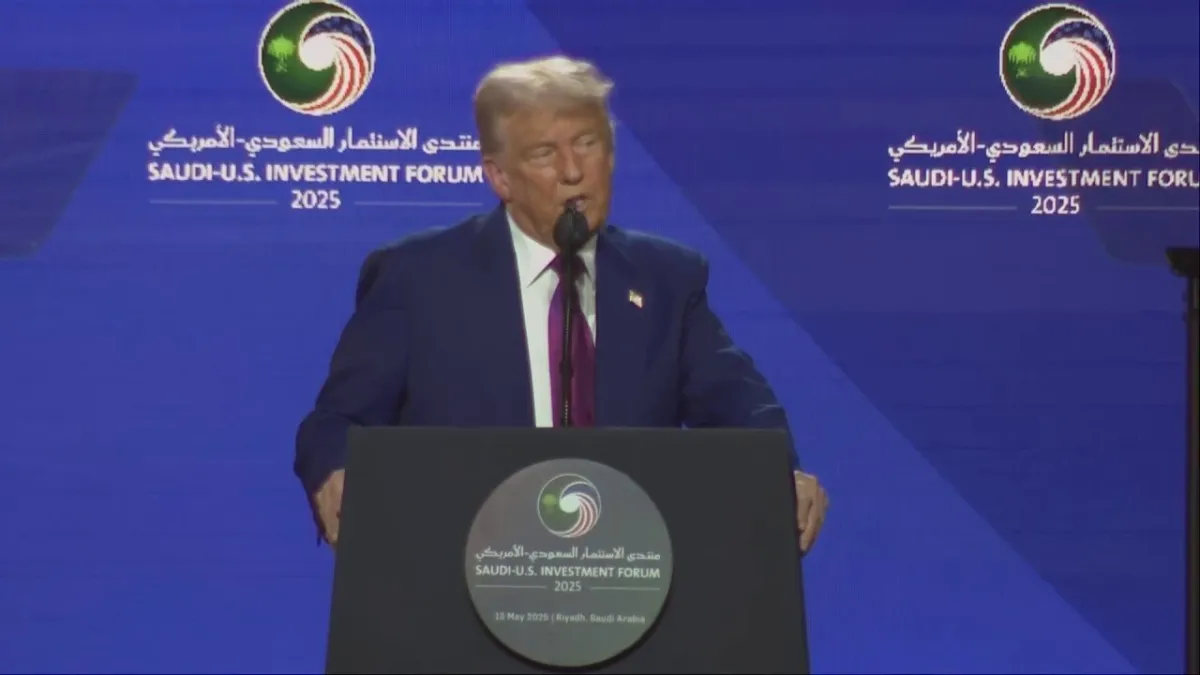Trump Concludes Historic Middle East Tour Securing Economic Deals, Syria Sanctions Relief, and Issuing Stark Warning to Iran
President Trump wraps up Middle East tour with key trade agreements, sanctions relief for Syria, and focus on Iran’s nuclear program amid limited Russia-Ukraine diplomacy.

President Donald Trump concluded a highly consequential week in the Middle East on Friday, departing from the United Arab Emirates after a whirlwind three-nation visit that saw both massive business agreements and political ripples across the region. The trip, which began in Saudi Arabia and continued to Qatar before ending in Abu Dhabi, was expected to focus on economic matters. However, the president’s actions went far beyond trade—he announced a landmark lifting of decades-long sanctions on Syria, issued stern warnings to Iran over its nuclear ambitions, and commented on the faltering peace efforts between Ukraine and Russia.
Blockbuster Economic Deals Across the Gulf
During his first stop in Riyadh, President Trump inked a $600 billion “strategic economic partnership” with Saudi Arabia’s Crown Prince Mohammed bin Salman. The deal encompasses Saudi investment in U.S. AI data centers and energy projects, along with joint ventures in cutting-edge technologies and a record-breaking $142 billion defense package. The White House hailed it as the largest defense sales agreement in history, with projections suggesting the total value could approach $1 trillion and create up to 2 million jobs for Americans.
In Qatar, Trump finalized a $1.2 trillion economic exchange, including a $96 billion purchase of 210 Boeing jets by Qatar Airways and collaborative investments in quantum technologies and workforce development. The Qatar deal attracted controversy after Doha proposed gifting Trump a new Air Force One jet—an offer that drew scrutiny back home.
Additionally, Trump expanded previous agreements with the UAE, announcing an extra $200 billion in commercial deals beyond those brokered earlier this year.
Tough Talk—and an Offer—to Iran
Beyond business, Trump addressed the ongoing threat posed by Iran’s nuclear program, reiterating Washington’s resolve to prevent Tehran from acquiring nuclear weapons. Speaking in Saudi Arabia, he delivered a stark ultimatum: “If Iran’s leadership rejects the olive branch and continues to attack their neighbors, then we will have no choice but to inflict massive maximum pressure. The choice is theirs to make.” Despite longstanding tensions, Trump softened his rhetoric at points, emphasizing that he does not believe in “permanent enemies” and offering Iran a path to improved relations if it abandons its nuclear ambitions.
Syria Sanctions Lifted in Surprise Move
One of the trip’s most unexpected developments was Trump’s announcement that the U.S. would reverse its decades-old sanctions on Syria, imposed since 1979. After meeting with President Ahmed Al-Sharaa of Syria’s interim government in Saudi Arabia, Trump argued that the war-torn country deserved "a fresh start" and signaled that normalization of relations was being considered.
“It gives them a good, strong chance. And it was my honor to do so,” Trump said, while acknowledging the difficult road ahead for Syrian reconstruction and ongoing conflict.
Ukraine-Russia Peace Efforts Falter
Trump briefly entertained the idea of attending peace talks between Ukraine and Russia in Turkey, though ultimately neither he nor Russian President Vladimir Putin participated. Trump downplayed Putin’s absence, attributing it to scheduling confusion and suggesting that substantive progress would only occur if both leaders meet directly. “Nothing’s going to happen until Putin and I get together. OK?” he said, although he expressed urgency about ending the conflict due to ongoing casualties.
Controversy Over Gaza and Regional Peace
While in the Gulf, Trump avoided directly addressing the ongoing war between Israel and Hamas in Gaza—a top concern for many regional leaders. Instead, he reiterated his controversial suggestion that the U.S. should “own” the Palestinian territory and transform it into a “freedom zone,” an idea rejected by Palestinians, Arab countries, and much of the international community, who continue to advocate for a two-state solution based on U.N. parameters.
The week’s trip, punctuated by major business deals and dramatic diplomatic maneuvers, has left analysts debating the long-term consequences for both U.S. foreign policy and the broader stability of the Middle East.
- Key economic deals were signed totaling over $2 trillion during the trip.
- The U.S. reversed 45 years of sanctions on Syria, contingent on normalization efforts.
- Trump issued a stark warning to Iran, but renewed offers for diplomacy.
- Attempts at Ukraine-Russia peace talks stalled, with both Trump and Putin absent.
- Middle Eastern nations pushed back against Trump’s Gaza plans, favoring established international proposals.
